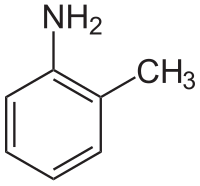
TRPA1 channel: New kid in the 'neurovascular coupling' town.
Sign Up to like & getrecommendations! Published in 2021 at "Cell calcium"
DOI: 10.1016/j.ceca.2021.102407
Abstract: The just-in time delivery of oxygen and nutrients to active brain regions to support function (functional hyperemia; FH) is mediated by not yet fully understood mechanisms collectively referred to as 'neurovascular coupling' (NVC). In a… read more here.
Keywords: coupling town; channel new; new kid; neurovascular coupling ... See more keywords

An inflammatory stimulus sensitizes TRPA1 channel to increase cytokine release in human lung fibroblasts.
Sign Up to like & getrecommendations! Published in 2020 at "Cytokine"
DOI: 10.1016/j.cyto.2020.155027
Abstract: External stimuli such as cigarette smoke and house dust mite are often involved in the development and exacerbation of asthma. These risk factors could activate or sensitize transient receptor potential channel ankyrin 1 (TRPA1), which… read more here.
Keywords: lung fibroblasts; cytokine release; human lung; trpa1 channel ... See more keywords

TRPswitch - a step function chemo-optogenetic ligand for the vertebrate TRPA1 channel.
Sign Up to like & getrecommendations! Published in 2020 at "Journal of the American Chemical Society"
DOI: 10.1021/jacs.0c06811
Abstract: Chemo-optogenetics has produced powerful tools for optical control of cell activity, but current tools suffer from a variety of limitations including low unitary conductance, the need to modify the target channel, or the inability to… read more here.
Keywords: chemo optogenetic; trpa1 channel; chemo; trpswitch ... See more keywords

Potential Common Mechanisms of Cytotoxicity Induced by Amide Herbicides via TRPA1 Channel Activation
Sign Up to like & getrecommendations! Published in 2022 at "International Journal of Environmental Research and Public Health"
DOI: 10.3390/ijerph19137985
Abstract: The “Multi-Threat Medical Countermeasure (MTMC)” strategy was proposed to develop a single drug with therapeutic efficacy against multiple pathologies or broad-spectrum protection against various toxins with common biochemical signals, molecular mediators, or cellular processes. This… read more here.
Keywords: cytotoxicity; amide herbicides; mechanisms cytotoxicity; common mechanisms ... See more keywords

Kinin B2 and B1 Receptors Activation Sensitize the TRPA1 Channel Contributing to Anastrozole-Induced Pain Symptoms
Sign Up to like & getrecommendations! Published in 2023 at "Pharmaceutics"
DOI: 10.3390/pharmaceutics15041136
Abstract: Aromatase inhibitors (AIs) cause symptoms of musculoskeletal pain, and some mechanisms have been proposed to explain them. However, signaling pathways downstream from kinin B2 (B2R) and B1 (B1R) receptor activation and their possible sensitizing of… read more here.
Keywords: b1r; trpa1 channel; pain; anastrozole induced ... See more keywords